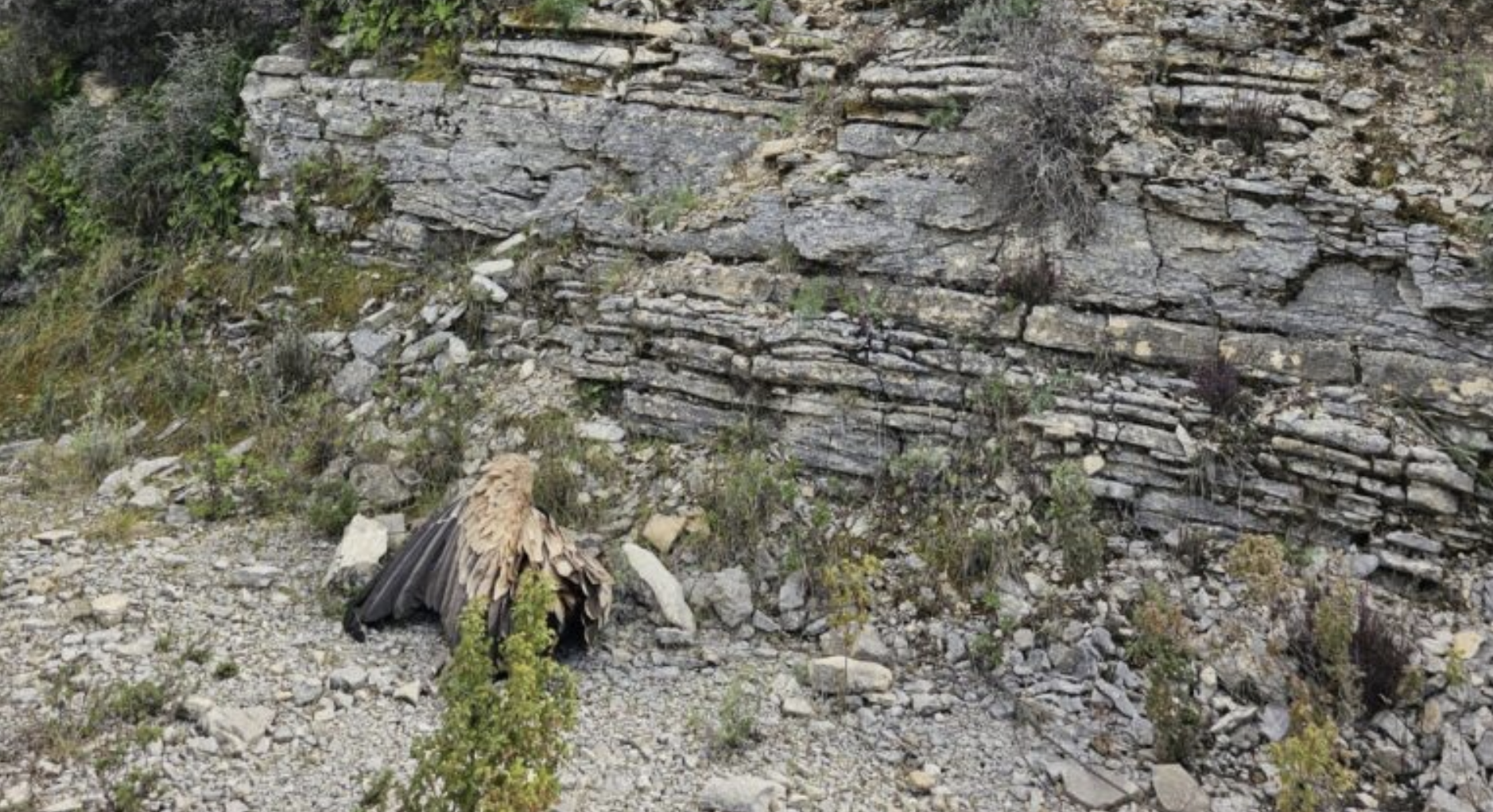
The most social of Europe’s vultures, the Griffon Vulture, is making an extraordinary comeback in Europe following its decline in the 20th century, with its breeding population exceeding 35,000 pairs, including over 30,000 pairs in Spain alone. We here at the Vulture Conservation Foundation (VCF) are involved in different reintroduction and reinforcement projects across Europe. Here is the breakdown of this year’s Griffon Vulture conservation highlights that we were involved in.
LIFE Under Griffon Wings

Led by Sassari University, the LIFE Under Griffon Wings project aims to improve the conservation status of Griffon Vultures. Their conservation efforts include improving food availability, establishing a network of farm feeding stations that are managed by the livestock breeders themselves and tackling illegal wildlife poisoning. The project is also carrying out an extensive restocking programme to enhance the small population by translocating birds from wildlife rehabilitation centres in Spain to Sardinia.
The VCF secures and transports the Griffon Vultures from Spain, and up until now, we provided a total of 62 birds, fulfilling the requirements of the project.
LIFE Re-Vultures

Starting in 2016, the five-year LIFE RE-Vultures project was developed by Rewilding Europe, in collaboration with the Rewilding Rhodopes Foundation the Bulgarian Society for the Protection of Birds, WWF Greece, the Hellenic Ornithological Society and us here at the Vulture Conservation Foundation. The aim of the project is to support the recovery and further expansion of the populations of Cinereous and Griffon Vultures in the cross-border region of the Rhodope Mountain by improving natural prey availability, monitoring movements of birds to help understand the threats they face and carrying out activities that will reduce the mortality of the populations from threats such as illegal wildlife poisoning and collisions with electricity infrastructure.
This year, a total of 72 Griffon Vultures successfully fledged in the Eastern Rhodope Mountains, where we are working through the LIFE Re-Vultures project.
The Bulgarian Society for the Protection of Birds(BSPB) coordinated the annual Griffon Vulture census in the Balkans within the LIFE Re-Vultures project this November. Teams from Bulgaria, Greece, Serbia and North Macedonia counted a total of 564-571 Griffon Vultures. More specifically, they counted 336 in Bulgaria, 80-87 in Greece, 122 in Serbia and 26 in North Macedonia.
This summer, the Bulgarian Society for the Protection of Birds (BSPB) and Elektrorazpredelenie Yug EAD continued the provision of bird-related electrical poles in the Eastern Rhodopes within the framework of the project.

Monitoring
Here at the VCF, we monitor vultures using GPS tracking technology, which is a vital tool for conservationists. With GPS trackers, we can track the everyday position and movement of birds anywhere in the world. This data helps understand migration patterns, behaviour and foraging ranges, and helps identify threats. Essentially, trackers can help indicate a specific bird’s health and assist conservationists in carrying out widespread actions that mitigate the threats, safeguard flight paths and support the comeback of these species.
This year, we provided GPS tags to four Griffon Vultures – two in the Balkans within our Balkan Anti-Poisoning Project and two in Cyprus as part of LIFE with Vultures.
LIFE With Vultures

This year, a new LIFE project was approved and launched in October – LIFE with Vultures. The project aims to preserve the species in Cyprus. To protect the Griffon Vulture population on the island, BirdLife Cyprus, in cooperation with Game and Fauna Service, Terra Cypria and us here at the Vulture Conservation Foundation, will implement this conservation project, funded by the EU’s LIFE Programme. The project “Saving Griffon Vultures in Cyprus through concrete conservation actions” will address the main threats the species face such as poisoning, lack of safe food, collisions with power lines and restock the Griffon Vulture population to the island by transporting birds from Spain.
Learn about the 2019 conservation highlights of the other European vulture species:
- Egyptian Vulture
- Bearded Vulture
- Cinereous Vulture
Thank you for your continuous support. You can donate to the Vulture Conservation Foundation and help us continue our conservation work, protecting Europe’s vultures.



